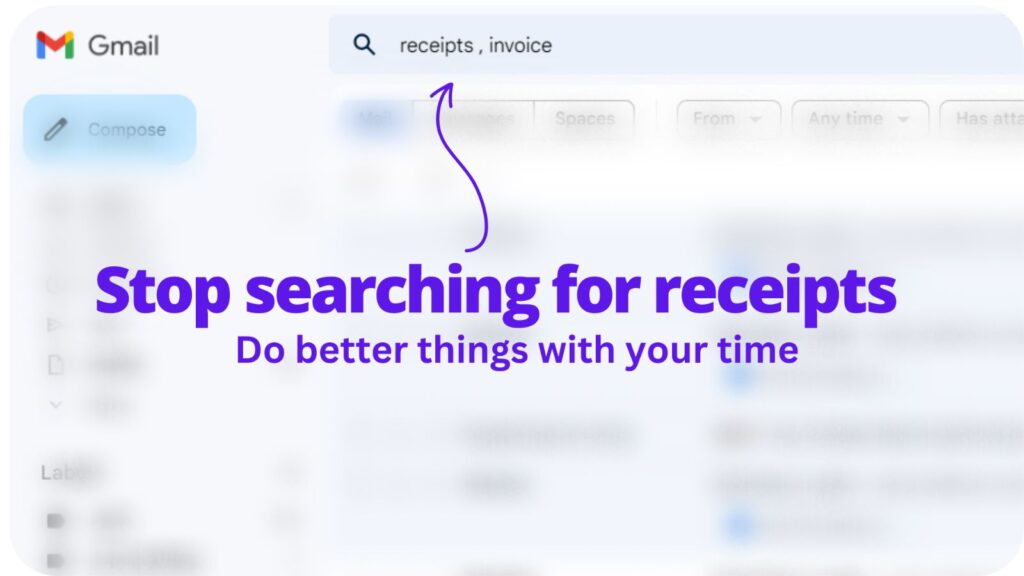In the digital era, managing financial documents like credit card receipts can seem daunting. Understanding how to handle these receipts is crucial whether you are a consumer or a business owner.
This article discusses why it’s important, how to organize them effectively, and the legal implications of proper receipt management. Join us as we unravel the essentials of handling credit card receipts.
Importance of Managing Credit Card Receipts
Privacy Considerations
Firstly, think about privacy. Each credit card receipt holds sensitive information. The Federal Trade Commission highlights the importance of keeping such personal data secure. This includes your primary account number or PAN.
Usually, your receipt only shows the last four digits of your PAN. This helps keep your account safe. However, if your receipt shows more digits, that’s a problem. Your account could be at risk. So, you should keep your receipts safe.
Customers also give signatures on receipts. This signature is unique. That’s why you must store your receipts. It keeps your signature safe. But also, remember to check your receipt.
Make sure the merchant only keeps the last four digits of your PAN. This is good practice for consumer privacy. If not, request for a new receipt.
Financial Management
You make purchases using your credit card. The credit card company keeps a record of your transactions. These are your credit card statements.
Your credit card receipt is your proof of purchase. It matches the transaction on your statement. If there is an error, your receipt can help you. It can show the correct transaction amount. You can then speak to your credit card processor.
Many merchants give out electronic receipts. Also known as e-receipts. They are sent to your email. This is a quick payment service. It’s easy and simple. But, be careful. E-receipts can also contain your PAN. Make sure to store these safely too.
Receipts are also important for tax purposes. The IRS recommends keeping credit card receipts. This is especially important for small business owners. It helps them to file their taxes. Receipts show all your business transactions. This includes the sale and purchase of goods.
In addition, if you have a business meal, you can claim it. Your receipt is proof.
How to Organize Credit Card Receipts Efficiently

Traditional Methods
Above all, we have the traditional way. This means using paper receipts. After a credit card transaction, the merchant gives you a receipt. This is your customer copy. You need to store it safely.
Firstly, sort your receipts. You can do this by date, merchant, or purchase type. Afterward, file them. Use folders or envelopes. You can also use a box. But remember, keep it safe.
A paper receipt has important information. This includes the transaction amount and the authorization code. Sometimes, it also has the customer’s signature. These are important for future reference. For instance, if there is a dispute, your receipt can help. It has the proof of your transaction.
Digital Solutions
Nowadays, there is also a digital way. This means electronic receipts or e-receipts. Many businesses provide customers with this option. It’s quick and easy. Best of all, it’s environmentally friendly.
Here’s how it works. After your purchase, you’ll get an email. This email has your e-receipt. It has the same information as a paper receipt. This includes your transaction details and the card issuer. This is your proof of purchase. So, be sure to save it.
You can also use apps to store e-receipts. These apps keep your receipts safe and organized. Plus, it’s easy to access them when you need it. You can also use cloud storage. It’s safe and accessible anywhere. Just remember to keep your login details safe.
Avoiding Mistakes when Handling Credit Card Receipts

Common Errors to Avoid
There are many mistakes people make with credit card receipts. Firstly, some people throw them away too soon. That’s not a good idea. Receipts are proof of your transactions. They help you keep track of your purchases.
Another mistake is not checking receipts. You should always check your receipts. Compare them with your credit card statement. This helps catch any fraudulent charges. Also, you can contact the card issuer if you see a mistake.
Also, don’t ignore the details. Receipts have a lot of information. This includes the transaction amount, card number, and merchant account. These details are important. You can keep track of your spending.
Best Practices
First, always keep your receipts. You can store them in a safe place or digitally. This helps you keep track of your spending. It also helps in case of disputes with merchants.
Second, always review your receipts. Check for any mistakes. Also, make sure the card number on the receipt matches your card. If not, contact your card issuer right away. It’s best to sign your receipts too. This proves it was you who made the purchase.
Lastly, it’s a good idea to shred old receipts. Especially ones with sensitive information. This includes your primary account number and expiration date. It’s a simple step, but it helps protect you.
Legal Implications of Credit Card Receipts Management
Credit card receipts involve laws. These laws protect both the customer and the business.
Consumer Rights
Firstly, let’s talk about consumer rights. Customers have the right to safe credit card transactions. This includes the right to keep their card information private. So, when you get a receipt, only the last four digits of your card number should show. The expiration date should also not be on the receipt.
Customers also have the right to dispute transactions. For this, receipts are very important. They serve as proof of purchase. If a customer sees a mistake on their bill, they can use the receipt to dispute it.
Lastly, customers have the right to ask for a signed receipt. This is a receipt that both the customer and the merchant sign. It’s an extra layer of protection for customers.
Business Responsibilities
Now, let’s talk about business responsibilities. Businesses, or merchants, also have responsibilities. One of these is to provide safe transactions. This includes using secure POS terminals. They also have to use chip card transactions, not just the magnetic stripe.
Merchants also have to provide customers with receipts. These receipts must not show the full card number or the expiration date. If they do, the merchant can get in trouble.
Finally, merchants have to keep a copy of all receipts. They store these receipts in a safe place. If a customer disputes a transaction, the merchant can use the receipt as proof. It’s also useful for their records.
Tips for Consumers on Storing Credit Card Receipts
Length of Time to Store Receipts
How long should you keep your credit card receipts? The answer is simple. Keep them until you get your credit card statement. Then, check the statement. Match your receipts with the transactions on the statement. This way, you can make sure all the charges are correct.
This practice is especially important in light of the duration for retaining business credit card receipts, as it offers clarity for both individual consumers and business owners alike.
If you find a mistake, you will need your receipt. It helps you show the card issuer the error. So, keep the receipt until the problem is fixed. Once everything is okay, you can throw away the receipt. But remember, do it safely.
Safe Storage Tips
Storing receipts safely is important. First, find a safe place in your home. This place should be away from heat and light. Why? Because heat and light can fade your receipts. This makes them hard to read.
Second, keep your receipts in order. You can sort them by date or by store. This helps you find them easily.
Lastly, keep your receipts private. Don’t let others see them. Your receipts have information that others can use. This includes the last four digits of your card number and your signature. So, keep them safe from prying eyes.
How Businesses Should Handle Credit Card Receipts
Creating a Receipt Management System
First, a business needs a system. This system will help keep track of all credit card purchases. It also helps with the receipts. A good system makes everything easy to find. It also keeps everything safe.
One way to do this is with a file. The business can create a file for each day. Then, it can put all the receipts for that day in the file. It can also add any transaction information. This way, it can find everything later.
Another idea is to use a cardholder. The business can use this to store the signed receipts. It can also use it for the merchant copy. But it must be sure to keep the cardholder safe. It should be locked away. This keeps it out of the wrong hands.
Compliance with Laws
There are laws for businesses too. These laws say how a business must handle credit card receipts. So, the business must follow them. For example, it can’t show the full account number. It can only show the last four digits. It also can’t show the expiration date. This is for the customer’s safety.
The business also must use a POS terminal. This helps with the chip card transaction. The business can use it to get the customer signatures. It can also use it to get the approval code. This is from the card networks. It shows the transaction is okay.
Lastly, the business must keep everything for a while. It can’t just throw things away. It must keep the receipts and other papers. This helps if there are problems later. Then, the business can show it did everything right.
Frequently Asked Questions
Are e-receipts better than paper ones?
E-receipts can be easier to handle. They don’t take up space, and you can find them fast. Plus, they’re better for the planet. But, like paper ones, e-receipts need care. They hold key data.
How should I get rid of old credit card receipts?
Old receipts need to be shredded. This makes sure that your key data won’t get stolen. Throwing them in the bin could be risky.
Are there laws on handling e-receipts?
Yes, e-receipts have laws too. They need to meet data laws such as the General Data Protection Regulation (GDPR) for businesses operating in or catering to European Union citizens.
They can’t show your full card number or its expiry date. And, they need to be stored safely. Plus, the systems that hold them need to be secure. They need to meet data laws.
Do shops need to keep both copies of the receipts?
Yes, shops need to keep a copy of all sales receipts. This helps if there are any problems. It also helps to keep the shop’s money records clear. The records, paper or digital, need to be safe. This helps to keep your data safe.
Final Words
Knowing how to handle credit card receipts is key for us all. As underlined by NerdWallet, effective management of receipts can also aid in better financial planning.
For instance, by listening to expert-recommended finance podcasts, consumers can gain a deeper understanding of their financial behaviors and make more informed decisions.
These simple bits of paper or digital notes hold important data. They prove we have bought something. Plus, they carry sensitive data. They need to be kept safe.
Buyers need to check their receipts with their card statements. Sellers need to follow the laws on receipt handling. Both paper and e-receipts have their own benefits. Knowing about both is handy in today’s digital world.

Collect receipts from your email automatically!
Try WellyBox - your AI assistant for receipts


